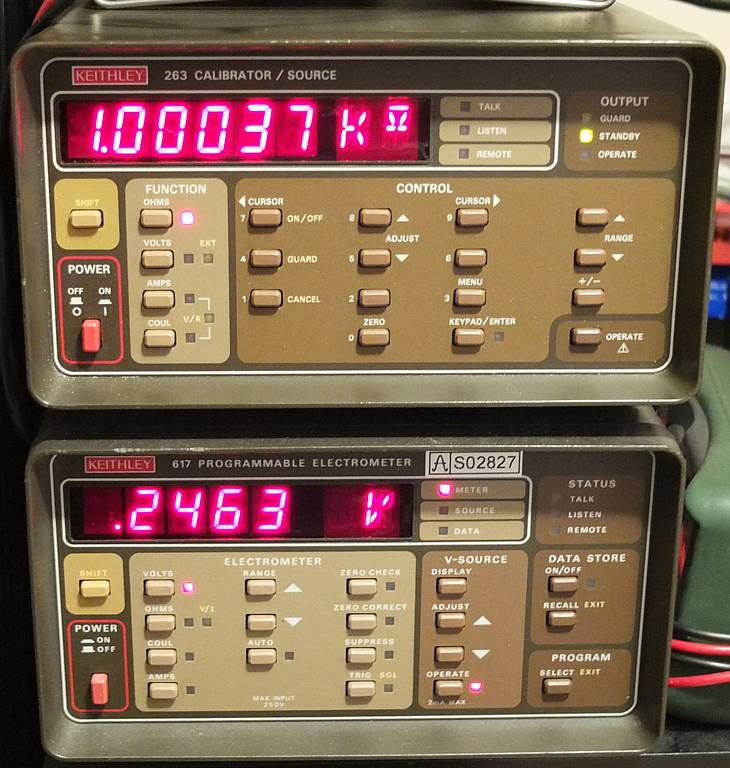It looks like my collection of Keithley gear is growing quickly. Here is the latest addition -
263 Calbrator / Source . A rather unusual instrument, combining some interesting features and capabilities. It can source voltage (from +/-5uV up to +/-20V on 20mV, 200mV, 2V and 20V ranges), current ( from 2pA full scale to 20mA full scale, the smallest step is 0.05fA !), charge and also can provide reference resistors in decades from 1K to 100G. There is also an internal electrometer amp that can accurately follow the voltage on the load in the current output mode, which means it is possible to measure resistances and voltage drop on diodes etc. The voltage source DAC is 16-bit (?) PWM based with a polarity switch, and the large reference resistors are provided with a temperature "compensated" reading (estimated from two measured during a calibration "cold" and "hot" values). The main reference is LM399.
I am waiting for Keithley
181 Nanovolmeter from the same range to arrive soon and also for some 2-lug triaxial connectors so I could operate the
K263 and
K617 together. I will post some measurements soon in this thread, but first impressions are very positive (measuring the reference resistors/voltages and currents sourced by
K263 with
K2015 and
K617)
Cheers
Alex
